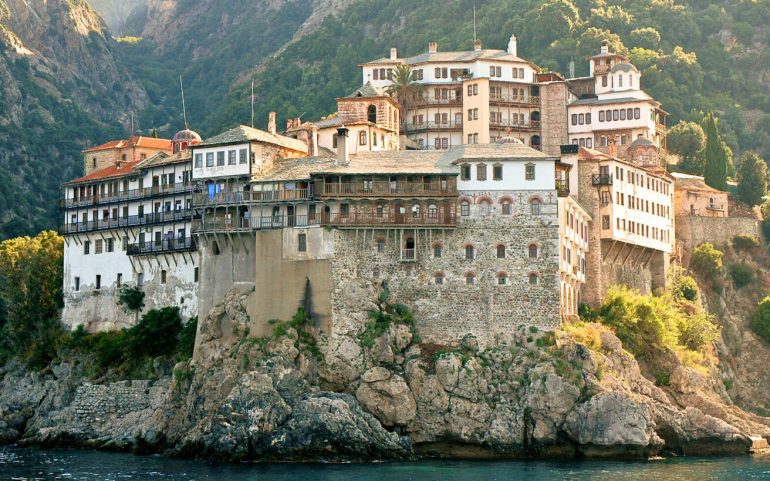According to Christian tradition, the Virgin landed on the sacred lands of Mount Athos and was dazzled by its natural beauty.
The ship carrying the Virgin and the Evangelist John was forced to drop anchor due to terrible turbulence and Theomitor, shocked by the natural spectacle she saw, blessed the area.
Then a voice was heard: "Let this place be your heritage and your garden, a paradise and refuge of salvation for those who want to be saved." The "Orchard of the Virgin" had just been born!
This is what tradition tells us about what seems to have happened in very distant times. For us today, Mount Athos is a place of reverence and contemplation, a seventh monastic state that since 1988 is included in the Cultural Heritage Monuments of UNESCO.

Mount Athos is characterized by a peculiar legal status that makes it an autonomous part of the Greek state.
In fact, regarding its property status, the territory of the Athos peninsula is inalienable and is divided between its sacred monasteries. The real estate of the monasteries outside Mount Athos is equally constitutionally guaranteed.
But how was the sacred Christian land born and how did it come to enjoy its autocephalous privileges?
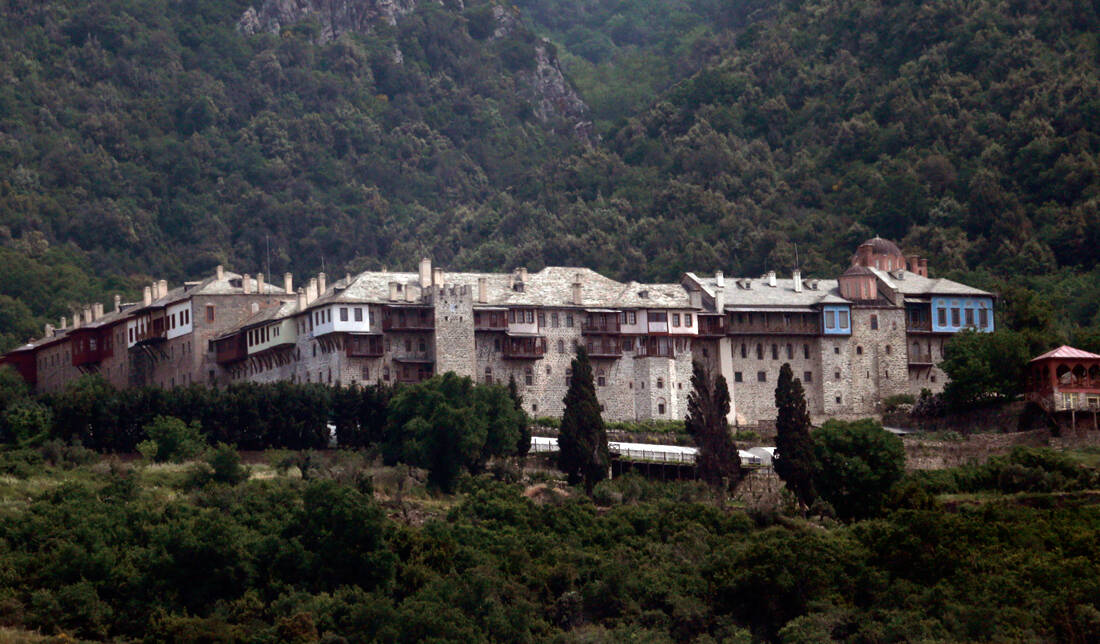
Mount Athos was already known from Greek mythology, as it was there that the titanic battle between giants and Olympian gods took place. And the leader of the giants was Athos, son of Uranus and Gaia, who grabbed a rock and threw it against the gods, creating there on its edge Chalkidiki the homonymous peninsula.
Thucydides, Herodotus and Strabo tell us that small communities have lived there since pre-Greek times and we know of some cities that existed within the peninsula.
The renaming of Mount Athos is lost in the depths of time, however one of the first reports comes to us from the 11th century. We find it in the "Martyrdom of the Fifteen Martyrs of Tiberiopolis", the hagiological work of the great Byzantine scholar and archbishop of Ohrid and Bulgaria afterwards, Theophylaktos.

It was called "Mount" until then and since the 12th century we now find it as "Mount Athos". This is how he calls it in his golden bull Emperor Alexios I Komnenos, imposing it by law: "From now on the name of Mount Athos will be called Mount Athos after all".
All later public documents refer to it as "Mount Athos [of Mount Athos]"…
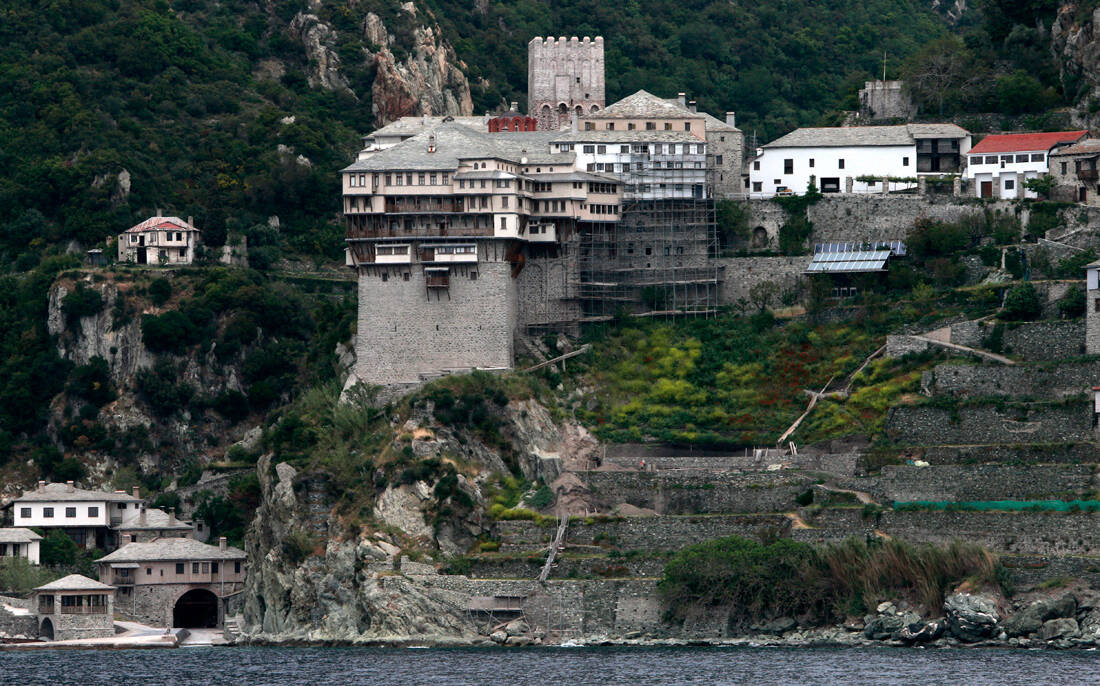
It is not known when Christianity arrived and how it was established on the peninsula. Tradition, however, wants Constantine I the Great to build the first Christian churches on Mount Athos, something that can not be confirmed. What is confirmed is the Christian presence on the peninsula from the 4th century AD, through monks who practiced there.
Mount Athos, however, began to unite in a monastic community from the 9th century onwards, when the first attempts at monastic life took place. Megali Vigla, the first monastery, was built at this time, in the second half of the 9th century.
This is where historical thought places the beginnings of the Athonite community, by defining its borders and banning the entry of the laity. It would soon become a privileged place for him monasticism, as the ancient cities were now deserted and the iconoclasm of Constantinople forced many monks to seek new refuge from the world.
Important monks such as Peter the Athonite and Euthymius the Younger arrive at Mount Athos at this time, establishing it in the consciences of asceticism. In 885 AD. In fact, the emperor Basil I of Macedon defined the Holy Mountain as the exclusive residence of ascetics, excluding any other human presence in the area.
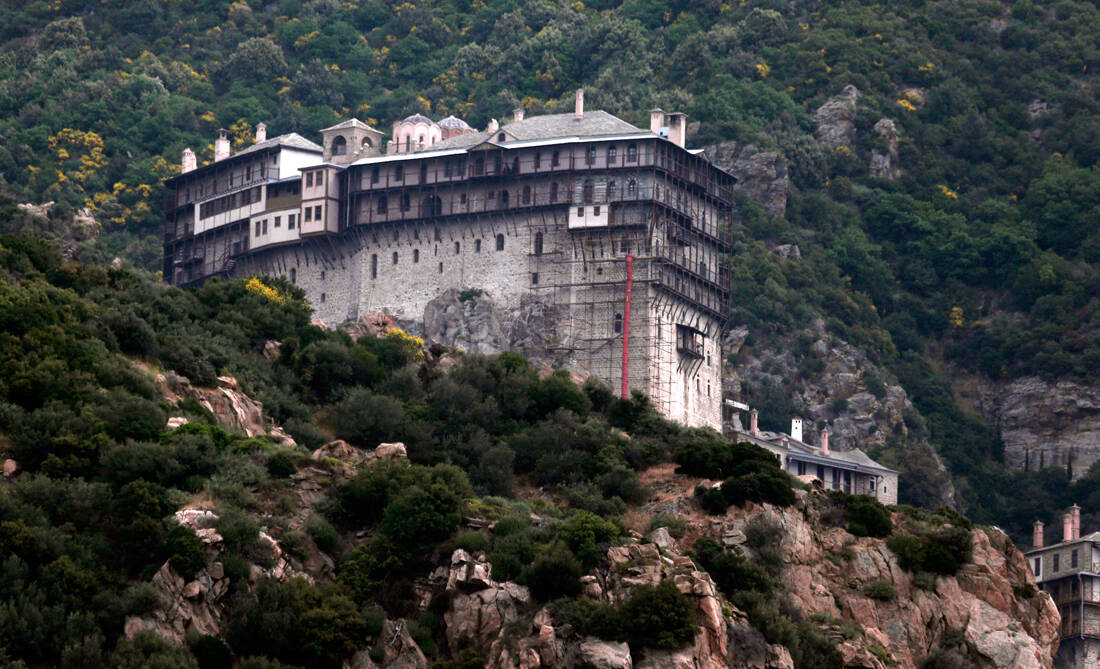
Ascetic and community development will flourish in a short time. Now (10th century) the first communities are born, the "laurels", and the ownership of Mount Athos is transferred to its monks (with the gold bullion of King V 'of the Bulgarian killer).
An important role in the reorganization of monastic life was played by Athanasios the Athonite, who in 960 AD. introduced extensive reforms in the monopoly. A personal friend of Nikiforos Fokas, he founded Monastery of Megisti Lavra and established new standards of asceticism and coenobitic life.
Athanasios is the founder of the coenobitic monasticism of Mount Athos, the man who gave him the character that survives to this day…
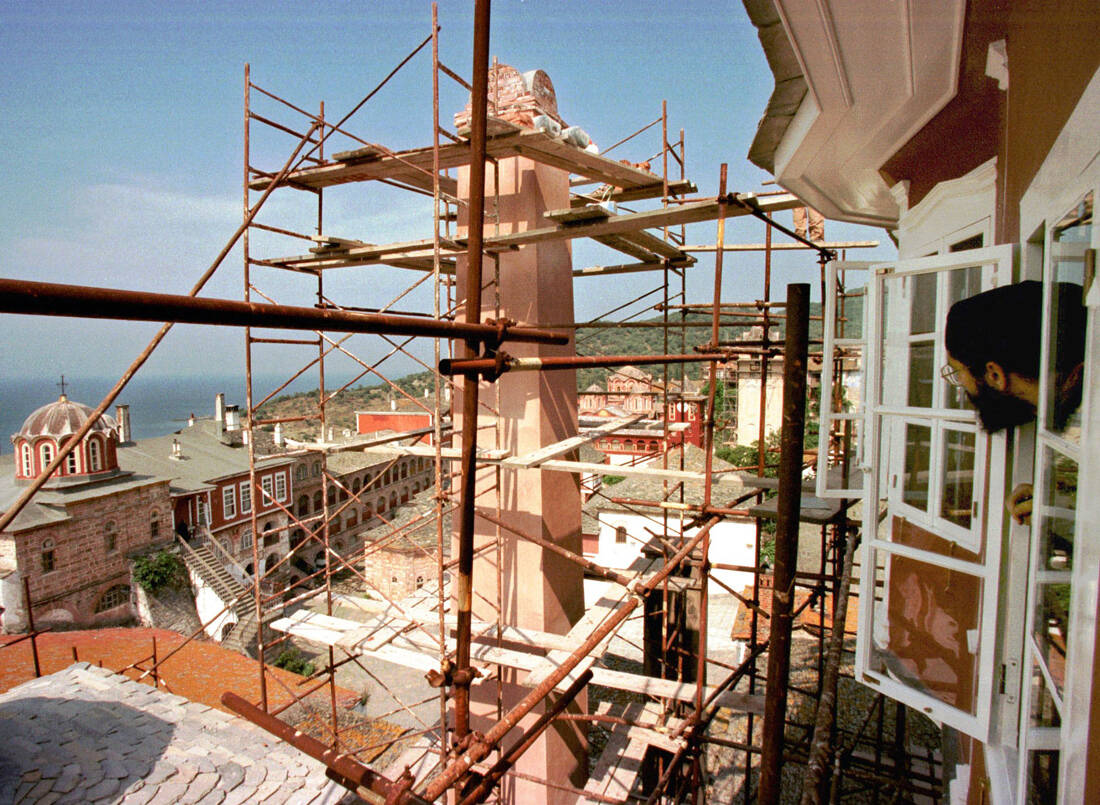
The privilege of self-government is intertwined as if with the birth of Mount Athos. It was granted for the first time by Basil I in his golden bull and shortly after, in 908 AD, the emperor Leo VI the Wise reaffirmed it, further establishing the independence of Mount Athos.
A century later, Constantine IX the Gladiator regulates by imperial decree the internal government of the Athonite state, but also every aspect of its management property of monasteries. Even any commercial activity.
In the same document we find the ban on women entering. A ban that is now very strictly guarded, so that the message is universal.
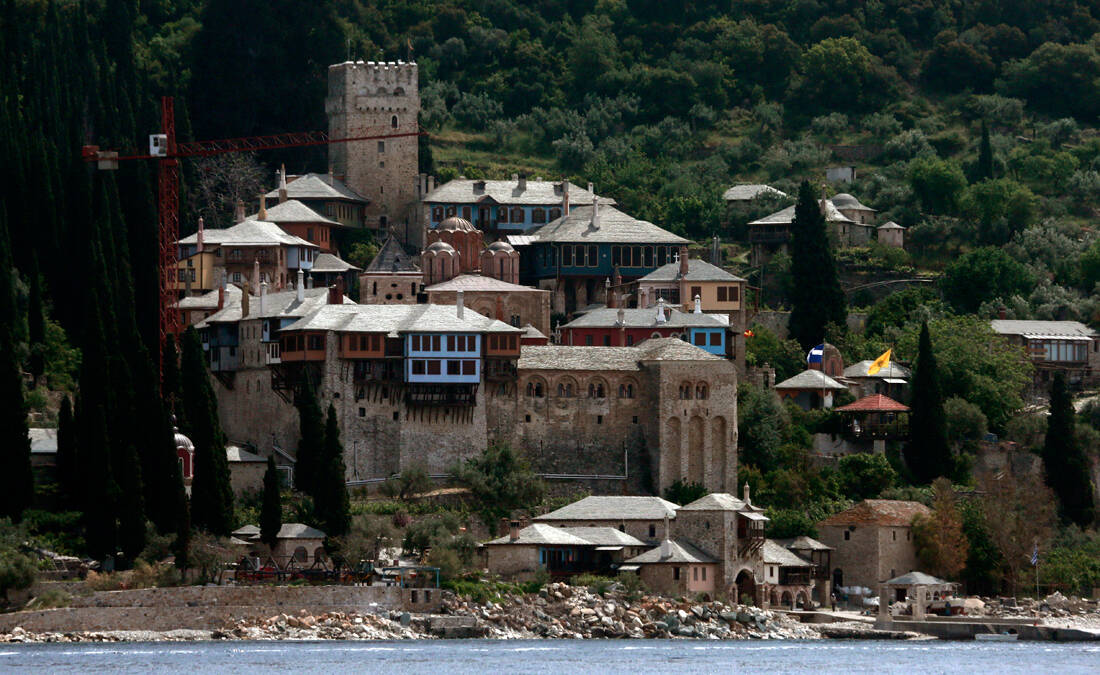
At the end of the 11th century, Alexios Komnenos exempted the monasteries from taxation and placed them under direct imperial protection.
In the years that followed, the small monastic state acquired large fortunes, both through private donations and generous state subsidies. The monasteries acquired land throughout Μακεδονία, exercising socio-economic influence on neighboring populations.
The rich and adventurous history of Mount Athos has experienced looting and destruction (by the Crusaders), raids and murders, and even internal religious strife.

In recent years, the administrative autonomy of Mount Athos was internationally recognized in 1878, with the Treaty of Berlin, before the recognition of the sovereignty of the Greek state in the region, that is.
The Greek state ratified in 1926 the Charter of Mount Athos, constitutionally formalizing its autonomy αυτο
